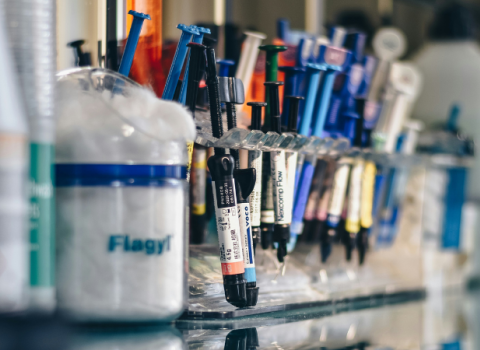
In Switzerland, Aravis Venture partner Jean Philippe Trippet is less definitive, though he says, “The theme has been around for the last five years, but has been somewhat disappointing.”
Almost ten years after the sequencing of the human genome was completed, personalised medicine in the shape of pharmacogenomics still has to prove it can generate good returns. The joint venture DiaDexus, involving SmithKline Beecham (now GlaxoSmithKline) and Delaware-based Incyte, raised $105.5 million in a prominent deal in 2000, but still has to show it can deliver payback.
In Europe, the University of Leuven’s spin-out OncoMethylome Sciences raised €25 million in an IPO in June 2006, but is yet to demonstrate it can generate profits.
With this track record, it’s no surprise that the marriage of molecular diagnostics and pharmaceuticals behind personalised medicine is considered rather unappealing by many venture capitalists.
Still, some European start-up companies that tag their technologies as personalised medicine have found a way to raise cash. That is the case with Grenoble-based ImmunID, a spin-out of the French research powerhouse Commissariat à l’Energie Atomique (CEA). Last year, ImmunID, which is commercialising blood tests to determine the state of the immune system of patients so that doctors can modulate their drug regimens, raised €5 million. Some of that money came from the CEA’s in-house seed venture capitalism fund and from a local bank, but Sofimac, a French venture capitalist investor specialising in early-stage financing, was also in the round.
ImmunID’s CEO, Nicolas Pasqual, explains their success in raising capital by saying, “The potential of personalised medicine is enormous, be it to design clinical trials on selected groups for which a drug has better chance to demonstrate its efficiency, or to target patients that are sensitive to a specific drug and dosage. Also it can avoid patients for whom a drug may be toxic.”
But many venture capitalists think such advantages for patients are difficult to associate with convincing business models. Most of them consider personalised medicine largely synonymous with biomarkers. “The problem is that those molecular biomarkers have been less efficient at selecting people that are more or less sensitive to a drug than first thought,” says Pouletty. “The networks of biology are far more complex than the simple link of one gene or hormone, with one receptor and one treatment.”
Trippet raises a further difficulty. “The problem with personalised medicine is that you have to associate a diagnostic with a drug. So, the investment has to be bigger than for a standalone pharma investment.”
Pasqual agrees. “The difficulty is that you have to prove in the clinic the efficiency of the association between molecular diagnostics and drugs. For a small company, it means you have to invest in quite sizeable Phase I clinical trials in order to demonstrate various responses with various subgroups of patients, before you are able to convince large venture capitalists.” But he believes also that ImmunID has found a way around that obstacle. The company’s technique works with standard blood samples, and is ten times cheaper than using DNA chips.
Despite their cautious stance, venture capitalists are making some modest investments in personalised medicine to explore new business models. Truffle Partners, for example, has invested in PharNext, founded by French pharmacogenomics guru Daniel Cohen. “That is because PharNext is developing drugs for diseases that currently have no treatment, by repositioning drugs already on the market,” explains Pouletty. “It mixes drugs in new ways, combines them and administers them in mini-doses to restore normal cell functions while reducing side effects. If one of those compounds does not work with some patients, they may benefit from another.”
Trippet has also done some investing in the field, for example with SBio, a Singaporean company developing cancer treatments. “Personalised medicines and their associated biomarkers have proven efficient mainly in the oncology field,” says Trippet. “New drugs need large commercialisation investments. With a drug that is not for everybody, those investments have to be even bigger in order to reach a population large enough to generate returns.”
But that cost can be reduced if you concentrate on a segment of the market like oncology. That’s why Roche, which has strength both in cancer treatments and diagnostics, has been one of the leaders in demonstrating the commercial potential of personalised medicine with its breast cancer drug Herceptin.
Personalised medicine is now starting to be applied to other therapeutic fields. ImmunID’s blood tests are used to personalise chemotherapies for cancer and have applications in treating infectious diseases. In 2009 the National Latsis prize, Switzerland’s highest award in medical research, was awarded to Mirjam Christ-Crain for her discovery of the diagnostic value of the hormone procalcitonin in lung infections such as pneumonia. In a clinical trial, using the hormone as a marker to distinguish between bacterial and viral pneumonia halved the use of antibiotics.
The savings associated with such improved use of drugs point towards healthcare reforms in the US, and the need to control healthcare costs elsewhere, as a potential driving force for more venture capital to be invested in personalised medicine. In the last months of 2009, four US-based personalised medicine start-ups, Generation Health, On-Q-Ity, Artemis and Thetys Biosciences, raised a total of $65 million. The rationale behind these companies is that the US healthcare system will reward molecular and scientific information that allows patient stratification and therefore more accurate prescribing, leading to significant cost savings.
For the venture capitalist, the question remains a tricky one: how to surf a trend that seems inexorable while generating returns using a model that is based on reducing drug consumption?





 A unique international forum for public research organisations and companies to connect their external engagement with strategic interests around their R&D system.
A unique international forum for public research organisations and companies to connect their external engagement with strategic interests around their R&D system.